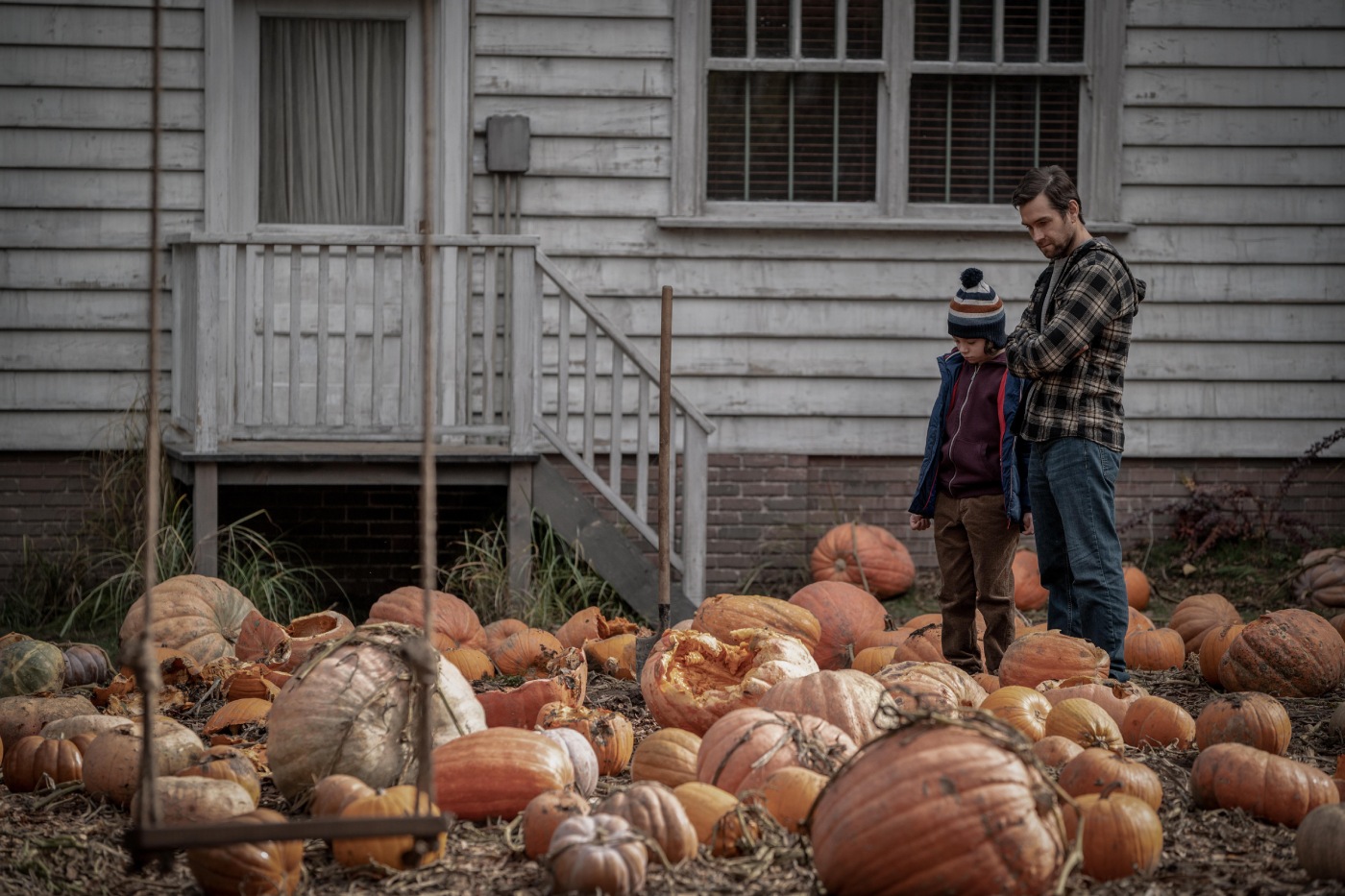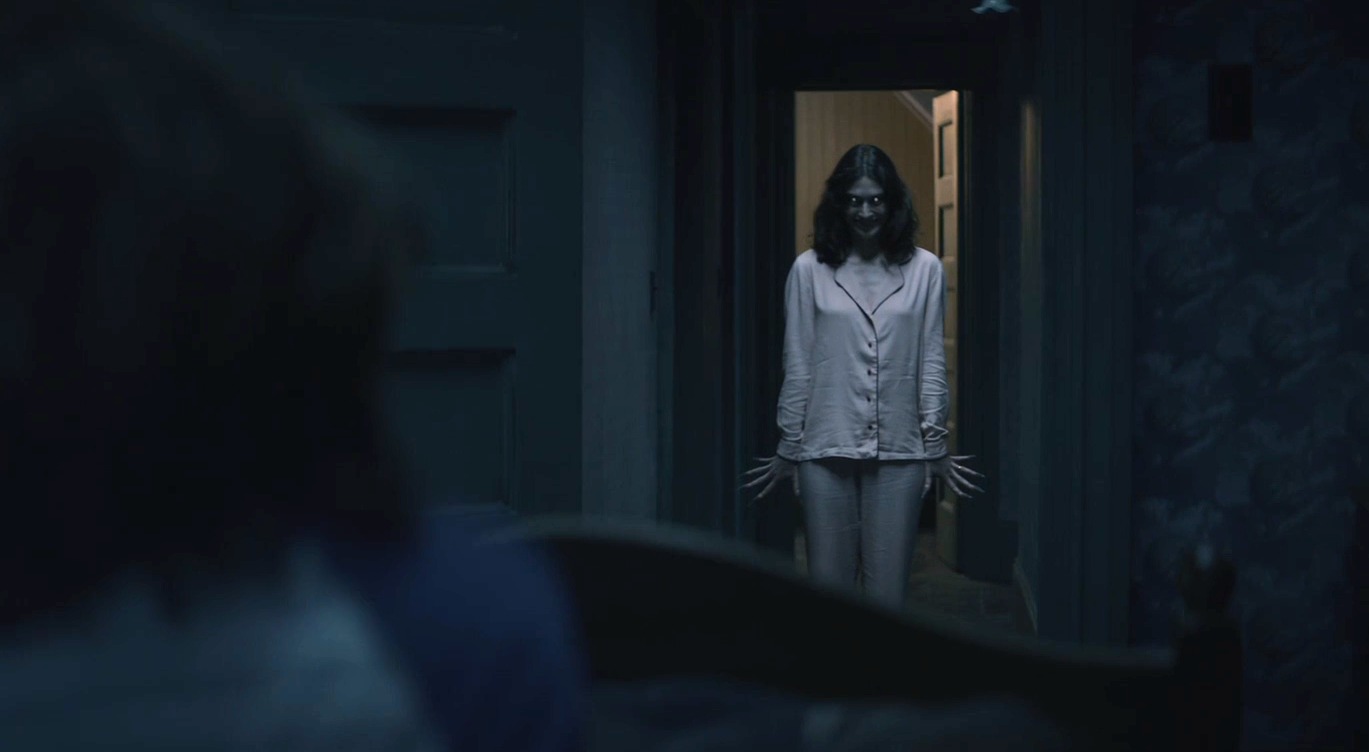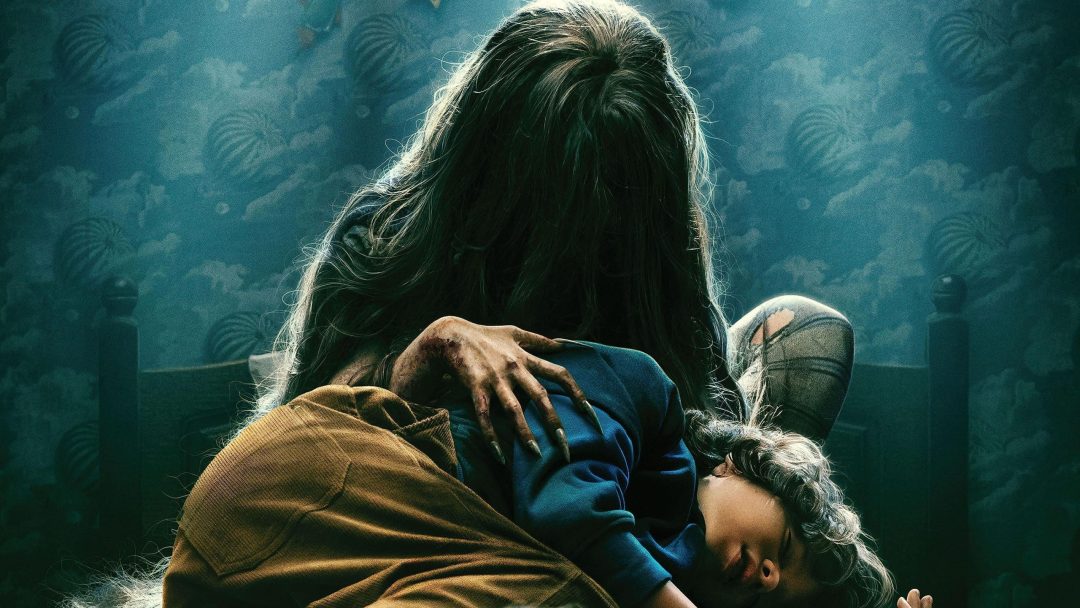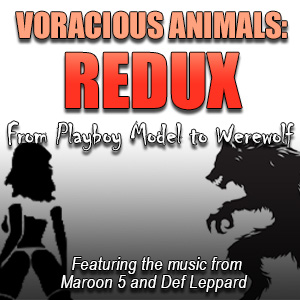The creators of Cobweb maybe owe the Richard Matheson estate some money. The movie seems to be built on the bones of one of his most famous stories, albeit with a POV shift. Borrowing from a master like Matheson gives those involved with Cobweb the right tools to work with. Unfortunately, they don’t necessarily wield them to their full effect. This review will be spoiler-free, but here is a brief summary of Cobweb: One night, a little boy hears tapping on his bedroom wall. Things ensue…

Cobwebheads
Woody Norman plays the boy in Cobweb. Horror fans may recognize Norman as the kid in The Last Voyage of the Demeter. He does the typical weird little boy schtick: disheveled hair, a wardrobe of muted colors, and lots of moody staring at nothing.
Lizzy Caplan is the mom. Caplan has a fantastic horror-movie persona with her big eyes and wicked-witchy looks. She uses these attributes well and is the best part of Cobweb. As she stomps through the movie in her spinster-like wardrobe, you can almost see the frayed threads she uses to wind her outward appearance together.
Anthony Starr is great in The Boys, but the role hasn’t allowed him to break out into film. Perhaps, Homelander is too niche, but it is good enough to get him into movies like Cobweb. Starr performs exactly as you would expect him to perform. If anything, he is underutilized, which is too bad. He and Caplan make a great couple that could be mined for a lot of entertainment.

Cleopatra Coleman plays a terrible teacher. How do we know she is terrible? Not a single one of her scenes features her sharing her sexual fetishes with grade-schoolers. Pathetic.
Cobwebslinger
Cobweb is helmed by first-time director Samuel Bodin. Bodin does his best to ensure that Cobweb has that dreary, dim look that every horror movie from 2000 onward seems to have. Beyond following that formula, he is neither good nor bad. He does the job asked of him and occasionally spins the camera to inject a bit of style into the proceedings.

In the end, Bodin should brighten things up. Instead of giving everything a gloomy Barry Sonnenfeld motif, a happy, suburban, Spielberg motif would have been a nice juxtaposition to the subject matter. Everything in Cobweb looks rotten from the get-go and screams “!HORROR MOVIE!” Thematically, things should have only been rotten around the seams as the movie gradually unfurls.
Cobwebshooter
Chris Thomas Devlin is the writer who might have cribbed from Richard Matheson. To analyze Devlin’s story too deeply is to go into spoilers, so we will stay surface-level. This is appropriate because, “surface-level” is a good way to describe Cobweb’s story.
Caplan and Starr are woefully shortchanged, but the biggest mistake made by Cobweb is the climax. A bunch of cannon fodder characters are suddenly injected into the movie. Three of them literally did not have one second of screen time until they showed up. This results in the viewer watching what mayhem Cobweb manages to generate with total detachment. It is made worse by the fact that these characters all wear masks. They are absolutely meaningless. If they had been even basically built up, the viewer might have gotten engaged with their part in the story.

Yet, Devlin does have some fun ideas. He was most effective at messing with expectations. As the movie played out, I thought I had it pegged, but it had a couple of nice shifts to keep me on my toes. All of that is good stuff, but once Cobweb settles into its groove, it flounders.
Cobwebbing
Cobweb needs about 15 more minutes to fully earn the things it tries to accomplish. It clocks in at only 89 minutes. Other criticisms of the film claim the story is too vague. That doesn’t track. The movie gives all of the details needed to understand what is happening. Certainly, it doesn’t bother with any sort of scientific explanation, but none is needed.
Metaphorically, Cobweb possibly touches upon the notion that adults can be mysterious, monstrous beings to children, who can’t fully grasp adult behaviors. If this was intentional, it is brief. Other films have more fully explored this concept, such as Parents (1989).

At the end of the day, Cobweb is pretty straightforward. The only thing that doesn’t make sense is its release schedule. It had a limited theatrical release in July and went to streaming mid-August. This is a Halloween movie all the way.
It is surprising to see that estimates of Cobweb’s budget are in the $20-30 million range. It comes off a lot cheaper than that. Not much is there for effects and locations. The bulk of the movie takes place in a house, and the bulk of the effects are quick, tight shots in dim light.
Looking at release dates, it becomes clearer why Cobweb was not a Halloween release. It would not compete with The Exorcist: Believer and Five Nights At Freddy’s. The spreadsheet folks likely knew they had a problem and released Cobweb when they did to recoup what they could.
Cobwebbed
Things exist to like about Cobweb. It might not be original, but the central idea is fun. Caplan and Starr are effective. Give it a setting makeover, 15 more minutes and, perhaps, a bit more of edge, and it would be a nice little horror movie. It also makes an attempt at franchise establishment, which is a bit too optimistic. A more definitive ending would have been appreciated. As it stands, Cobweb stands on two feet (and maybe Matheson), but it doesn’t quite stand apart.






